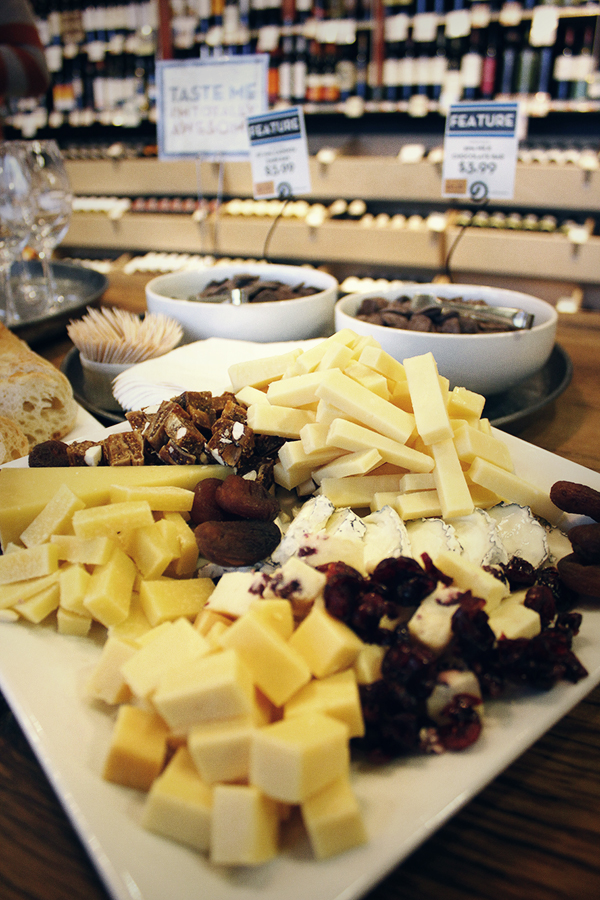Back to Basics: What’s the Difference Between Raw & Pasteurized Cheeses?

We took a little break from the Back to Basics series during the holidays and now we’re back to talk all about cheese! Here in the Cheese Department, we’re constantly asked to distinguish cheeses made with raw milk from those made with pasteurized milk. Thankfully, we have a great selection of both kinds and are usually able to help people find tasty cheeses no matter what! But we’re also often asked what makes them different in the first place, and we’d like to take some time to answer that right now.
In a word, the difference between them is heat. Of course, you savvy turophiles know there’s got to be much more to it than that, and you’d be right. The Raw vs. Pasteurized conversation is one that includes science, history, controversy, and when it comes right down to it, personal preference.
In a nutshell, if a cheese is made with raw milk, it means it’s made from milk which is collected and at some point transferred directly to the cheesemaking vat. If instead it’s made from pasteurized milk, it means there’s an additional step between the collection and the vat wherein the milk is heated to a specific high temperature for a certain amount of time. The process is named for French scientist Louis Pasteur, who pioneered the process in the 1860’s, and the purpose is to ensure the safety of the cheeses. Is cheese dangerous, you ask? No, but raw milk and dairy products can carry a potential risk to consumers if they contain harmful bacterial pathogens, and since these bacteria are susceptible to heat, treating the milk to heat prior to cheesemaking can basically ensure that none of those potential “bad” bacteria live. (Some examples of these bacteria include ones heard of, such as Salmonella and E. coli, which show up in the animals themselves either because of contaminated food or drinking water, and there are more obscure ones as well, such as Listeria monocytogenes, which exist outside of the animals in the cheesemaking environment. Regardless of what they’re named or where they come from, you don’t want them in your stomach.) Prior to the 1920’s, when pasteurization came to the United States, outbreaks of contamination in raw milk and subsequent illnesses happened with some frequency, causing sickness and even death.
At this point, you might be thinking, “You’re right! I don’t want raw milk in my stomach! Why doesn’t all milk get pasteurized?” Well, there are definitely reasons why a cheesemaker would opt to use raw milk instead, and these include cheese quality and consistency, loss of yield due to pasteurization, cost of pasteurization equipment (which can be prohibitive), and more. It’s important to note here that cheesemakers get a choice as to how they provide safety to consumers: as per the U.S. FDA –established guidelines, they can either pasteurize the milk or keep the cheese at a temperature of 35°F for 60 days or more. The vast majority of those illnesses preceding pasteurization were due to consuming raw milk, not raw milk cheese, which is not the same thing. And it’s good to keep in mind that these aging regulations are specific to the United States while other countries have different, more often less rigid, rules. In fact, one major reason we’re unable to carry specific imported cheeses is because they’re made from raw milk and aged fewer than 60 days.
Another reason why some cheesemakers opt for raw milk, and why some consumers opt to purchase raw milk cheeses, is for the potential nutritional benefits that come from unpasteurized products. While the “bad” bacteria get destroyed during pasteurization, so also do some of the theoretically “good” bacteria, along with some vitamins and minerals. Of course, this isn’t to say that pasteurized milk cheeses aren’t nutritious- they certainly are. They just don’t have quite as much of the good stuff as the raw milk cheeses. The comparative nutritional benefits are still being researched and debated, and while some consumers are convinced they feel healthier due to eating raw milk products, others are convinced that that’s just bogus. Passions definitely run high on both sides of this controversial subject!
Which brings us to the last, and perhaps most important, point of all: personal preference. You could read all the science and history behind pasteurized vs. raw milk cheese (and trust us, there’s a lot out there) but when it comes down to it, you might just decide that following your inclination would be best. Are the flavors of the cheese affected by pasteurization? Is the nutritional value? Is the overall quality? Are you taking a great risk when eating raw milk cheese? Are you losing anything by eating pasteurized milk cheese? You’ll find information out there that answer both “yes” and “no” to all of these questions. Perhaps through trial-and-error, you might just find that more of the cheeses you prefer are made with pasteurized milk… or alternatively, raw.
Whatever you decide, we’ll have something for you to enjoy.



